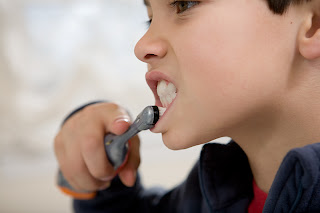 One word nobody wants to hear when they visit their dentist is Cavity! That’s right, the dreaded cavity; but what exactly is a cavity and how do they happen? A cavity is a hole that develops in a tooth when the tooth begins to decay. It’s important to get a cavity filled as soon as it’s detected so that it does not grow bigger.
One word nobody wants to hear when they visit their dentist is Cavity! That’s right, the dreaded cavity; but what exactly is a cavity and how do they happen? A cavity is a hole that develops in a tooth when the tooth begins to decay. It’s important to get a cavity filled as soon as it’s detected so that it does not grow bigger. So, what causes a cavity? A cavity is caused by plaque, a sticky substance that forms on the tooth as a result of germ and bacteria build-up. Plaque is acidic and as it clings to your teeth the acids eat away the outside of the tooth (also called the enamel) and a hole is formed.
Yes, cavities can be repaired by your dentist, but here are a few simple steps you can take to prevent cavities:
• Brush your teeth with fluoride toothpaste at least twice daily
• Gently brush your gums to keep them healthy (when choosing a toothbrush it is recommended to use soft bristles)
• Floss your teeth at least once a day to remove plaque and food that may be caught between your teeth and braces where your toothbrush can’t reach
• Limit the amount of soda and sugary treats you eat/drink
• Be sure to visit your dentist every six months for a teeth cleaning and check-up in addition to your orthodontic appointments
















